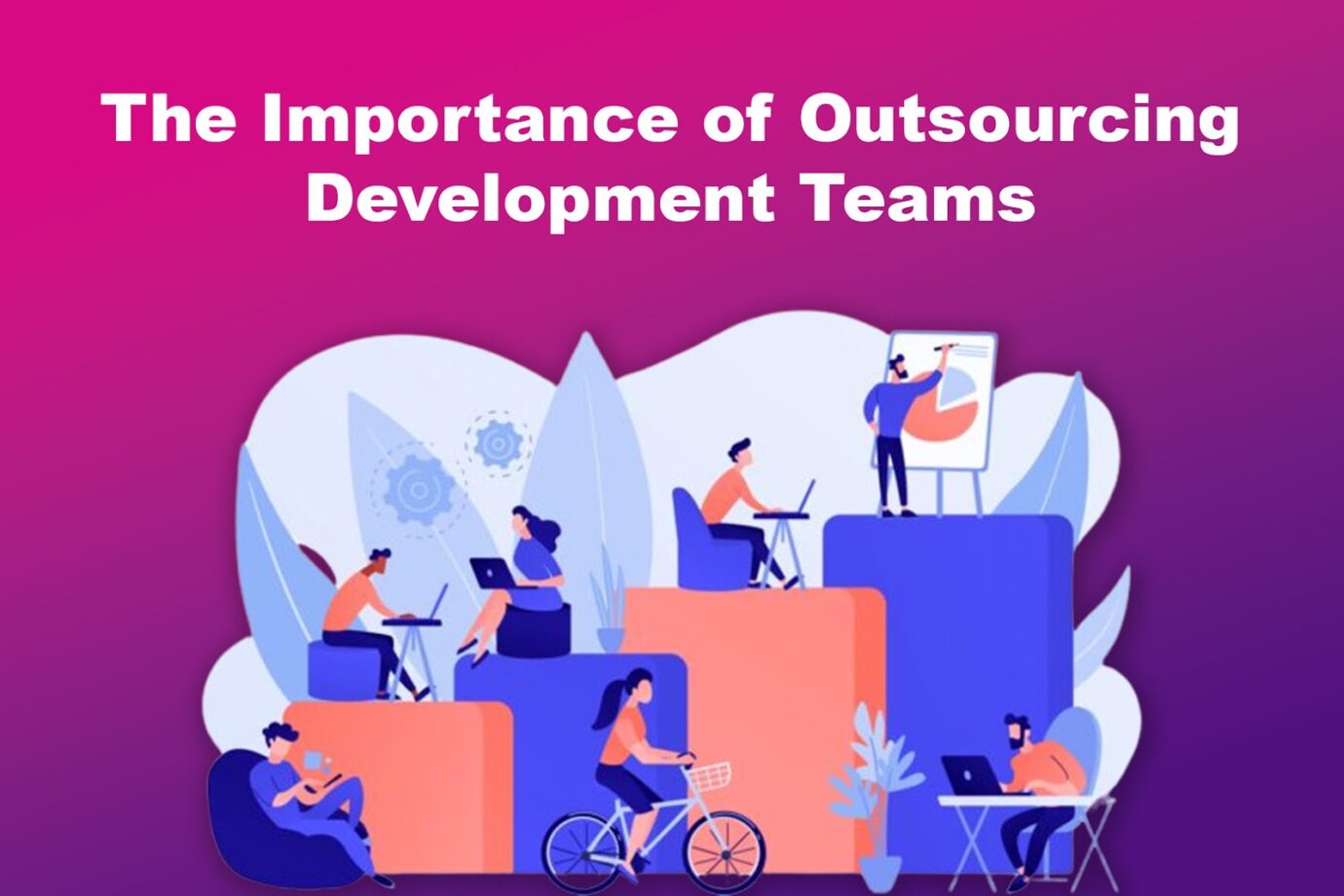Businesses that want to broaden their reach must have an online presence. This is why you’ll see many companies have websites and software that their target clients can visit. Unfortunately, not all companies have an in-house team that can handle software development. Or if they have, the team’s hands are usually already full with their daily tasks.
This is where outsourcing a software development team comes into play.

In this article, we’ll explore everything you need to know about outsourcing a development team. We’ll also look at the steps towards integrating an external force into your business model. Let’s get into it!
Planning to outsource your software development needs? Before doing so, it’s crucial to understand its advantages and disadvantages.
What Does Outsourcing a Development Team Mean?
Outsourcing a development team means getting a third party to handle software development tasks instead of relying on in-house employees. An outsourced development team can provide services ranging from developing to maintaining a company’s existing software.
In 2023, the revenue in IT outsourcing was to hit $460.10 billion. With this trend, development team outsourcing can expect to see an 11.07% growth annually between 2023 and 2028. This shows that more and more businesses are turning to outsourced development teams for their software needs.
What Are the Types of Outsourced Development Team Models?
These are the three models of outsourced software development teams:
1. Location-Based Outsourcing
The location of the team you’ll outsource influences the cost of hiring them. For instance, many IT teams worldwide promise expert skills for a lower cost than what onshore teams offer.
These are the different categories of location-based outsourced development teams:
- Onsite Outsourcing.
In this case, the outsourced team works within a company’s premises. This makes it easier to monitor projects closely. - Onshore Outsourcing.
Here, the outsourced team is within your country. Most businesses prefer onshore outsourcing because it’s easier to coordinate with a team in the same time zone or with similar cultural and work ethics. - Nearshore Outsourcing.
This refers to outsourcing a development team in a neighboring country or under the same region. - Offshore Outsourcing.
Offshore stretches the boundaries to anywhere in the world. It allows companies to work with a diverse team. Here are the steps to building an offshore team. - Multisource Outsourcing.
A company mixes the different types of location-based software development outsourcing models.
2. Contract-Based Models
In this model, a company outsources a team per the contract. The provider must complete projects according to your time frame and requirements.
These are the two groups of contract-based development team models:
- Fixed Price.
You and the outsourced development team agree upon the workload’s price and delivery timeline before they start working on your needs. Having a fixed price helps avoid unnecessary additional costs. - Time & Materials Model.
In this model, the outsourced team notes all resources used within the project, and your company bills them after the project ends. It is a good model for a project that may need constant changes.
3. Relationship-Based Model
This model features a balanced responsibility between the project owner and the outsourced development team.
These are the three groups of relationship-based outsourced development team model:
- Staff Augmentation Model.
The project owner leases or hires experts from an outsourcing company to work with the in-house team. - Managed Team Model.
The development team exclusively works on your projects within a specific time frame. You can also share responsibility and ownership with the outsourcing company, depending on your agreements. - Project-Based Model.
All the responsibility falls to the outsourced IT team. They execute the project as per your requirements.
Planning to outsource on a large scale? If so, it’s important to learn about global talent management and how you can use it to outsource talents effectively.
What Is the Importance of Outsourcing Development Teams?
Outsourcing a development team lets companies access a diverse talent pool. It’s also useful when a company lacks the tools and resources to execute a specific software project.

Here is an in-depth look at the importance of outsourcing a development team:
- Cost-Effective.
Having an in-house software development team can be costly, especially for startups. Outsourcing eliminates the costs of training, salaries, and related benefits. - Timely Delivery.
Outsourced development teams are experts, so they can deliver excellent results in the shortest possible time. - Flexibility.
Outsourced software developers let companies choose who to work with on their IT needs. Businesses can also choose the size and expertise of the team whenever needed. - Better Output Quality.
Outsourced development teams have the tools and processes to deliver high-end software quickly. While your in-house team can create excellent software, they might need more time to work on it than an outsourced team. - Enhanced Focus.
Since outsourced teams are experts, you don’t need to constantly manage and monitor their work. This gives you more time to focus on your core tasks.
Learn more about Why Outsourcing Software Development Can Benefit Your Business.
5 Steps for Outsourcing Software Development Teams
Outsourcing software development to a dedicated team is beneficial for businesses. Knowing how to find the right team that can bring profit to your company is essential. By properly outsourcing an IT team, you can reap the benefits of their expertise.
Here are the five steps to outsourcing a software development team:
1. Identify Your Software Development Needs

Start by outlining or defining your software development needs. This helps you find the experts you need for your business’s project.
Take note of the time frame, budget, the task you’ll delegate to the outsourced team, and your desired outcome. Having well-defined roles early in the project helps a company maximize the outsourced team’s strengths. Your needs also determine which outsourcing model best works for you.
Read more about Creating an Effective Software Project Plan.
2. Asses the Options Available
A background check is a must when outsourcing a development team. Consider the service provider’s talent pool, budget, pricing, and work ethic.
It’s also essential to evaluate the third-party service provider’s experience. How many projects similar to yours have been done before? If possible, ask them to present a portfolio. You should have shortlisted several companies by the end of your assessment stage.

3. Choose the Most Suitable Team
Now that you have shortlisted potential candidates, determine what they can offer besides their essential services. Remember that the skills and expertise of the outsourced development team should match and fill in your company’s resource gaps. A good team should be disciplined, resourceful, and organized.
Additionally, get a team that is flexible and willing to face unforeseen challenges that may come along the way.
Want to know why companies choose to outsource work? Check out this article.
4. Outline a Detailed Contract
Once you have the “dream team” ready, draft a contract. An outsourcing contract is a legally binding agreement between a project owner and an outsourcing provider.
It should outline terms and conditions from the start of the project until it ends. Getting a legal team involved is also ideal.
Here are the factors that you should include in your outsourcing contract:
- Work Scope.
This refers to the responsibilities, deliverables, and tasks your outsourced development team has to work on. - Duration.
Outline the start and end dates of the project. Ensure the development team has enough time to work on your project. - Payment Terms.
This covers how much and when you will compensate the team for the services offered. It also includes all other expenses, such as travel costs. - Ownership of Intellectual Property.
Quite often, companies prefer to retain the project’s intellectual property. Outlining your firm as the owner of the project the outsourced team worked on gives you the right to use and modify it shortly. - Confidentiality.
The contract should include a non-disclosure agreement (NDA) along with the limitations to confidentiality. - Dispute Resolution.
It is important to cover how to resolve disputes that may result in the cause of the partnership. - Legal Compliance.
A contract should clearly outline the applicable legal, industrial, and labor laws and certifications. It is essential, especially in the case of offshore outsourcing.
5. Maintain a Good Working Relationship

Always maintain a close working relationship with your team and monitor the project’s progress closely. A good working relationship allows you and the outsourced development team to work together efficiently.
A balance between personal and professional relationships creates room for open communication. As a project owner, remember to listen to be heard.
You can also use these steps to outsource data processing services.
How to Manage Outsourced Developers
Managing an outsourced development team needs collaboration and communication. It involves monitoring performance without micromanaging. Providing constructive feedback without condescending the development team also gives the team room to learn and grow.
These are three tips on how to manage an outsourced development team:
- Offer Constructive Criticism.
Provide timely feedback to create an open-sharing culture. Also, ensure everyone, including the superiors, can offer support when needed. - Keep Track of Progress.
Stay on track with the latest developments to easily monitor performance. This way, you can ask your outsourced team to make necessary changes to their work as soon as possible. - Maintain Quality.
Conduct regular quality assessments and occasionally carry out tests to uphold quality.
Outsourcing Development Teams is the New Norm!
In business, it is essential to minimize costs without compromising on quality. In the case of IT, outsourcing software development to a dedicated team helps companies maximize outside expertise without the in-house expenditure.
Open communication is key to a successful outsourcing relationship. Always remember to assess a team before making a formal commitment.
